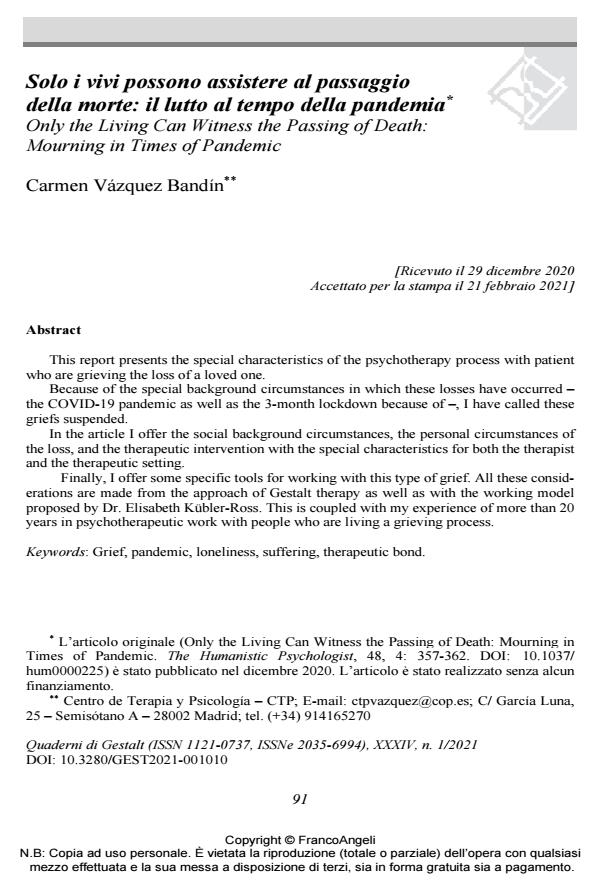Only the Living Can Witness the Passing of Death: Mourning in Times of Pandemic
Journal title QUADERNI DI GESTALT
Author/s Carmen Vázquez Bandín
Publishing Year 2021 Issue 2021/1
Language Italian Pages 9 P. 91-99 File size 180 KB
DOI 10.3280/GEST2021-001010
DOI is like a bar code for intellectual property: to have more infomation
click here
Below, you can see the article first page
If you want to buy this article in PDF format, you can do it, following the instructions to buy download credits

FrancoAngeli is member of Publishers International Linking Association, Inc (PILA), a not-for-profit association which run the CrossRef service enabling links to and from online scholarly content.
This report presents the special characteristics of the psychotherapy process with patient who are grieving the loss of a loved one. Because of the special background circumstances in which these losses have occurred - the COVID-19 pandemic as well as the 3-month lockdown because of , I have called these griefs suspended. In the article I offer the social background circumstances, the personal circumstances of the loss, and the therapeutic intervention with the special characteristics for both the therapist and the therapeutic setting. Finally, I offer some specific tools for working with this type of grief. All these consid-erations are made from the approach of Gestalt therapy as well as with the working model proposed by Dr. Elisabeth Kübler-Ross. This is coupled with my experience of more than 20 years in psychotherapeutic work with people who are living a grieving process.
Keywords: Grief, pandemic, loneliness, suffering, therapeutic bond.
Carmen Vázquez Bandín, Solo i vivi possono assistere al passaggio della morte: il lutto al tempo della pandemia in "QUADERNI DI GESTALT" 1/2021, pp 91-99, DOI: 10.3280/GEST2021-001010